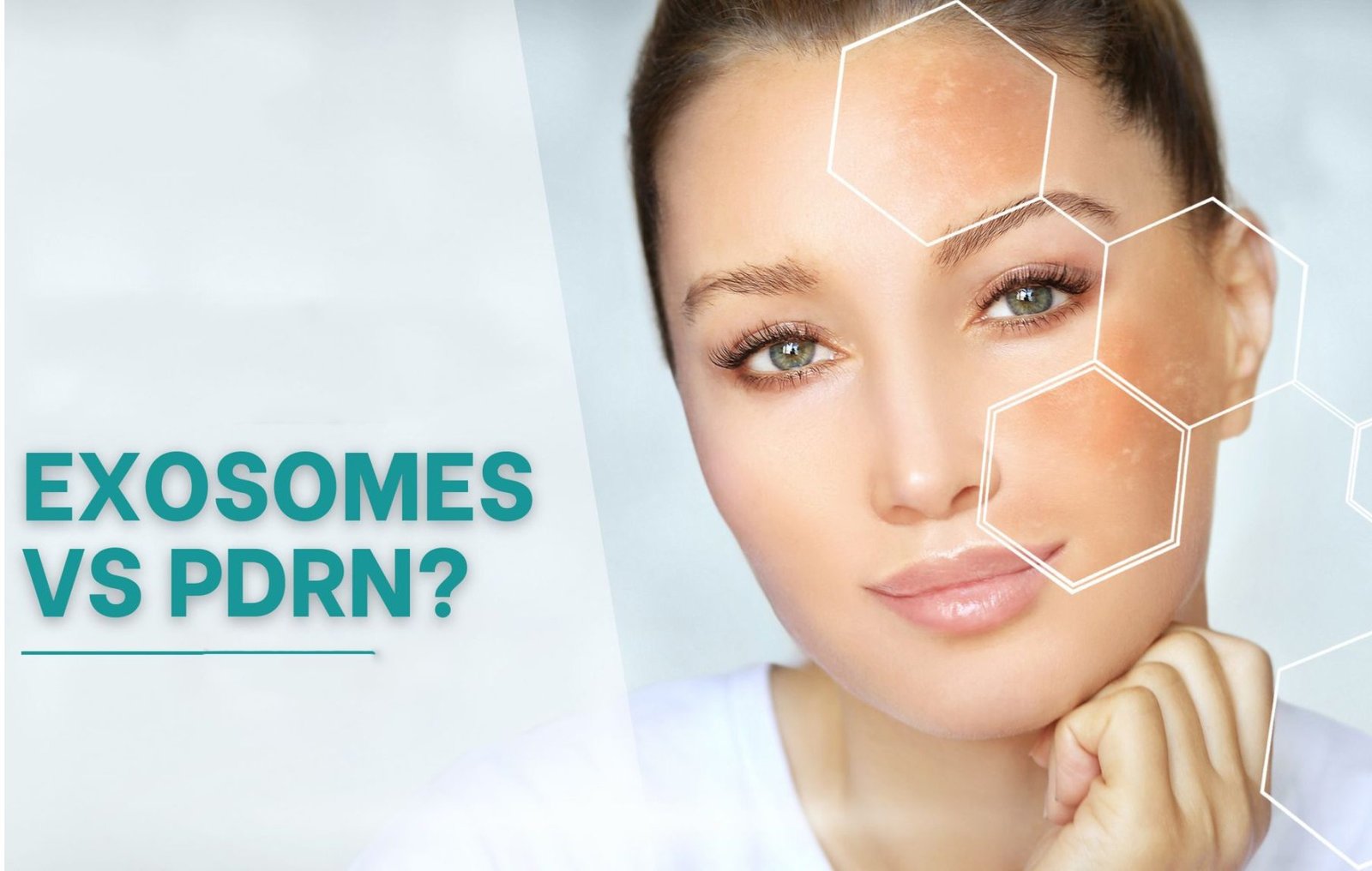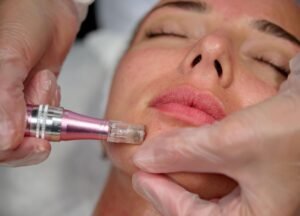
The Future of Skin Regeneration: Exosomes vs. PDRN in Borivali

The Future of Skin Regeneration: Exosomes vs. PDRN in Borivali
In the ever-evolving world of aesthetic medicine, two breakthrough treatments have emerged as front-runners in skin regeneration: Exosomes and PDRN (Polydeoxyribonucleotide). Known for their transformative results, both therapies are becoming increasingly popular across skincare clinics, medspas, and cosmetology practices. But what sets them apart? Which one is better suited for your skin? In this blog, we’ll take a deep dive into both innovations to help you understand their science, benefits, and how they can work alone or together to give you healthier, younger-looking skin.
What Are Exosomes?
Exosomes are nano-sized vesicles naturally released by cells, especially stem cells. They carry proteins, lipids, RNA, and growth factors that help with cell-to-cell communication. Think of exosomes as messengers that deliver instructions to damaged or aging skin cells to heal, regenerate, and perform better.
They’re derived from sources like mesenchymal stem cells (MSCs) and are usually used after treatments like microneedling or laser therapy to speed up healing and enhance results.

How They Work:
Exosomes transfer beneficial molecules directly into skin cells.
They stimulate collagen and elastin production.
They reduce inflammation and improve skin tone, texture, and hydration.
Because they are non-cellular, they don’t pose risks like stem cells themselves, making them a safer regenerative option.
Exosomes are especially effective for those looking to address fine lines, dullness, acne scars, and sun damage. While the research on exosomes is still emerging, early results are highly promising.
What Is PDRN?
PDRN stands for Polydeoxyribonucleotide. It is derived from salmon DNA specifically from the sperm of salmon species like Oncorhynchus mykiss or Oncorhynchus keta. Despite its unique source, PDRN is considered safe, biocompatible, and hypoallergenic for human skin.
PDRN is widely used in Korean skincare and is often referred to as “salmon DNA” in treatments like Rejuran Healer, a popular skin booster injection in Asia.
How It Works:
PDRN promotes cell growth by stimulating DNA synthesis.
It encourages tissue repair and collagen formation.
It reduces inflammation and accelerates healing in damaged skin.
It improves hydration, elasticity, and overall skin health.
The effects of PDRN are slower and more progressive compared to exosomes but are extremely effective for long-term skin recovery and maintenance.
Comparing Exosomes and PDRN: Which One Is Right for You?
Both exosomes and PDRN offer skin regeneration, but they function in different ways.
Exosomes are more targeted and work by sending signals to skin cells to repair themselves. They are best for people seeking visible changes in skin tone, elasticity, and radiance, especially after aggressive treatments like microneedling or lasers.
PDRN, on the other hand, provides the building blocks your skin needs to regenerate at the DNA level. It’s ideal for those dealing with sensitivity, inflammation, or early signs of aging. It works slower but is gentler and great for long-term skin health.
While exosomes act like a “messenger,” telling your skin to heal, PDRN acts like the “material” your skin uses to rebuild.
Real-World Experiences and Reviews
Anecdotal evidence from skincare forums and clinics suggests that both treatments are highly effective. Users report noticeable improvement in skin texture and firmness after a few sessions of exosome therapy. One user on Reddit even described exosomes as “EGF on steroids” for their ability to accelerate healing and boost radiance quickly.
PDRN, on the other hand, is praised for its calming, soothing properties. Users often describe feeling less redness, reduced irritation, and a soft, dewy glow over time. Although it may not give an immediate ‘wow’ factor, its effects are steady and reliable.
Can They Be Used Together?
Absolutely. In fact, many advanced skin clinics are now combining exosomes and PDRN in their post-treatment protocols to maximize results. Exosomes help communicate repair signals quickly, while PDRN supplies the nutrients and DNA building blocks needed for regeneration.
This dual approach helps speed up healing after procedures like laser resurfacing, chemical peels, or microneedling. It also enhances collagen synthesis, reduces inflammation, and improves skin tone all at once.
Application Methods
Both exosomes and PDRN can be applied topically or injected into the skin. The most common method is to apply them after microneedling, which creates micro-channels in the skin and allows deeper penetration of active ingredients.
In some cases, PDRN is administered through skin boosters (tiny injections across the face) for more targeted rejuvenation. Exosomes are often used in a similar way or layered topically after high-tech treatments.
It’s essential to consult with a qualified dermatologist or aesthetic practitioner to determine the best delivery method based on your skin type and goals.
Are They Safe?
Both exosomes and PDRN are generally safe when administered by professionals. However, there are a few things to keep in mind.
Exosomes are non-cellular and have a low risk of immune rejection, but the market is not yet tightly regulated. Make sure you’re receiving FDA-cleared or clinically tested exosome products.
PDRN is derived from salmon, so there’s a very small chance of allergic reactions in individuals with fish allergies. It has, however, been used for decades in medicine and aesthetics with a strong safety record.
Future of Skin Regeneration: What Lies Ahead?
The use of biologics like exosomes and PDRN in skincare is just beginning. In the coming years, we can expect to see even more advanced and personalized skin treatments using bioengineered exosomes, tailored DNA complexes, and regenerative peptide cocktails.
These treatments will not only target aging but also offer solutions for pigmentation, acne scars, and even chronic skin conditions like eczema and rosacea.
As the aesthetic industry moves toward minimally invasive, high-efficacy treatments, exosomes and PDRN are setting a new gold standard in regenerative skincare.
Final Thoughts
Choosing between exosomes and PDRN doesn’t have to be a one-or-the-other decision. They each offer unique advantages:
If you want faster visible results, improved skin texture, and post-treatment healing, exosomes may be the better fit.
If you’re looking for gentle, long-term repair and hydration, especially for sensitive skin, PDRN is an excellent choice.
For optimal skin regeneration, combining both under professional guidance can offer the best of both worlds.
Whatever your choice, investing in scientifically-backed, regenerative skincare can help you achieve healthy, radiant skin that truly glows from within.

